#urban renewal
Text

Controlled burn in Mount Albion, Ontario, Canada (1966)
#burning house#house fire#fire#abandoned#abandoned house#urban decay#urban renewal#photography#1960s#60s
1K notes
·
View notes
Photo

Jean Renaudie's Renovation of Ivry-Seine's City Centre (1969-72)
70 notes
·
View notes
Text

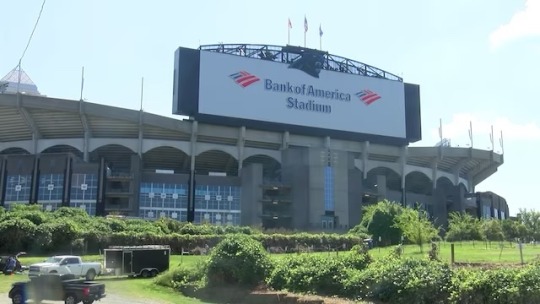
Tens of thousands of people visit Bank of America stadium to watch the Carolina Panthers play football each year – never realizing they are walking on top of lost remnants of a once-thriving Black neighborhood established in the aftermath of the Civil War.
The stadium itself is built directly atop a relic of segregated healthcare: Good Samaritan Hospital, the first private hospital built in North Carolina to serve Black patients. Built in 1891, this historic hospital was one of the oldest of its kind in the United States.
It was also the site of one of the “most horrific racial incidents in Charlotte's history,” according to Dan Aldridge, professor of History and Africana Studies at Davidson College.
A mob of 30 to 35 armed, white men invaded the hospital, dragging a man out of the hospital and into the streets – and shooting him dead in front of the building.
The concept of “urban renewal” destroyed Black neighborhoods, communities, businesses and homes all across North Carolina, especially between 1949 and 1974.

Durham, for example, once had a prominent Black Wall Street, where Black businesses flourished; however, the historic community was almost completely destroyed by construction of the Durham Freeway.
Likewise, Raleigh once had 13 historic Freedmen's Villages, built entirely by men and women freed from slavery in the aftermath of emancipation. Today, only two are remaining, and Oberlin Village, the largest one, was cut in half by the construction of Wade Avenue.
Similarly, Charlotte's Brooklyn community was built by men and women freed from slavery in the late 1800s. Like many Black communities around the state, it was forced into an awful geographical location – on low-lying land where flooding, sewage and sanitation issues made life hazardous.
According to history in the Charlotte Library, the Brooklyn area was first identified on maps as ‘Logtown’ in the late 1800s – a name that matches closely with titles given to similar freedmen villages in the Triangle area, which were often called slang names like ‘Slabtown’ or ‘Save Rent’ due to their inexpensive homes.
In the 1900s, the area became known as Brooklyn, “a name that would become synonymous with the Black community until urban renewal.”
“It's a tragedy that so many stadiums were built on sites that were once Black communities,” said Aldridge. “They're poor neighborhoods. They're struggling neighborhoods. I won't romanticize them by claiming they're all like Black Wall Street, but they were people's homes and people's communities, and they were taken from them.”
Many historically significant Black sites were lost in urban renewal; likewise, many Black communities were forced to build in geographically unfit areas, making growing wealth and property more difficult – and more easily lost over time.
At its peak, Brooklyn was home to:
Charlotte's first Black public school
Charlotte's only Black high school
The city's first free library for Black patrons
The first companies to offer white collar jobs to Black workers
The first private hospital for Black citizens in Charlotte
Today, football players run up and down the Bank of America field for the amusement of thousands of cheering fans. However, in 1913, over a century ago, that same land had a very different story.
(continue reading) related ↵ related ↵
#politics#urban renewal#structural racism#carolina panthers#bank of america#bank of america stadium#panthers stadium#good samaritan hospital#black wall street#blacklivesmatter#racism#erasure#displacement#north carolina#systemic racism#brooklyn nc#brooklyn north carolina#black history#football#nfl#nfl football#whitewashing history
108 notes
·
View notes
Text

The construction of Lincoln Center required the obliteration of the neighborhood known as San Juan Hill. It was home to a large population of Blacks, Puerto Ricans, and Afro-Caribbeans when Harlem was still White. Also known as "the Jungles," it was the setting for West Side Story, which opened on Broadway in 1957. It also had a lot of middle-class White residents.
As that was happening, residents were fighting the proposal for an arts complex in the Lincoln Square part of the neighborhood. The poster above urged residents to attend a meeting to stop the project on August 28, 1957. Harris L. Present, a lawyer who had long advocated for the rights of minority groups in the city, led the fight. More than 400 residents showed up. Present urged them to march on City Hall on September 11, hoping to overwhelm the City Planning Commission with pickets and testimony.
Check back here on September 11, 2023, for the sequel. (Spoiler: Lincoln Center was built anyway.)
Photo: Lincoln Center/Gothamist
#vintage New York#1950s#Lincoln Center#San Juan Hill#neighborhoods#urban renewal#Robert Moses#Harris L. Present#August 28#neighborhood destruction#28 August#Aug. 28#28 Aug.#gentrification#slum clearance
68 notes
·
View notes
Text

Urban Renewal Remade Destroyed Cropped Tank Top
#Tank Top#white tank#Urban Outfitters#Urban Renewal#jeans#denim#leather coat#ootd#fashion#style#casual#outfit#minimal#Streetwear
39 notes
·
View notes
Text

Think of it as urban renewal, Barda!
(Invasion! #2)
#invasion!#battleground earth#blue beetle#ted kord#mister miracle#scott free#big barda#Melbourne#Australia#urban renewal#beetle bombs#crossover#team up#keith giffen#bill mantlo#dc comics#comics#80s comics
52 notes
·
View notes
Text
The lost community of Lightning
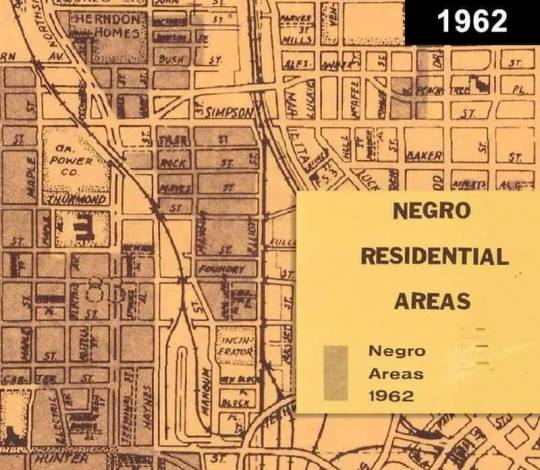

A 1962 map from the Atlanta-Fulton Planning Board shows where Black households were located in the city, as a way of mapping what was termed as "negro expansion."
You can find similar maps throughout the GSU Digital Collections. Planners kept track of where Black communities were located -- especially low-income ones -- often to peg a place as being ripe for "renewal," which appears to have been code for: "erase this place and fill it with something that appeals to white suburbanites."
The area immediately to the left of the map legend was the location of a neighborhood called Lightning, which was partially demolished to make way for the Georgia World Congress Center, and the remaining pieces were demolished prior to construction of the Georgia Dome in the 1980s.
See the second image for a look at this same area now. The land on the north side of the Mercedes-Benz stadium is where Lightning stood.
The community might have gone undocumented and forgotten if not for the careful work of an Atlanta journalist.

In 2017, local writer Max Blau did a deep investigation of the history of the neighborhood which was published in Bitter Southerner.
In the wake of that investigation, Councilmember Michael Julian Bond wrote an ordinance for creating a commission to develop some kind of memorial for Lightning.
I've sent an email to his office to find out if anything came of that. From my own brief search, I couldn't find any evidence in Council records that the commission ever met and produced anything, but hopefully they did.
I'll update with whatever I find out from Bond. I think there absolutely should be something that recognizes that people lived here. And I'd like to see a lot of other recognition of where people lived before neighborhoods were demolished for various urban renewal projects in Atlanta.
Source for 1962 map: atlmaps.org
52 notes
·
View notes
Photo


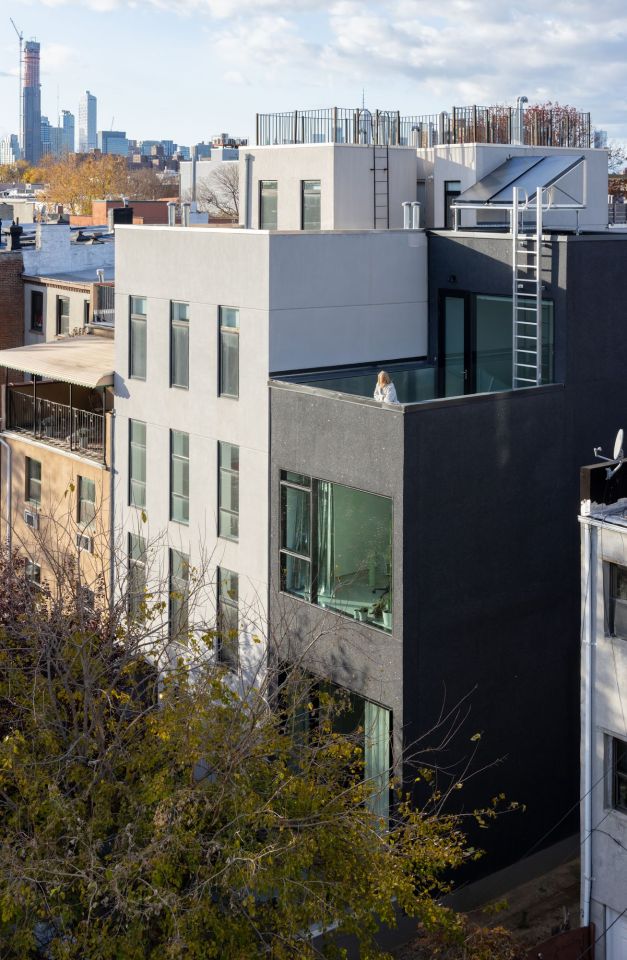
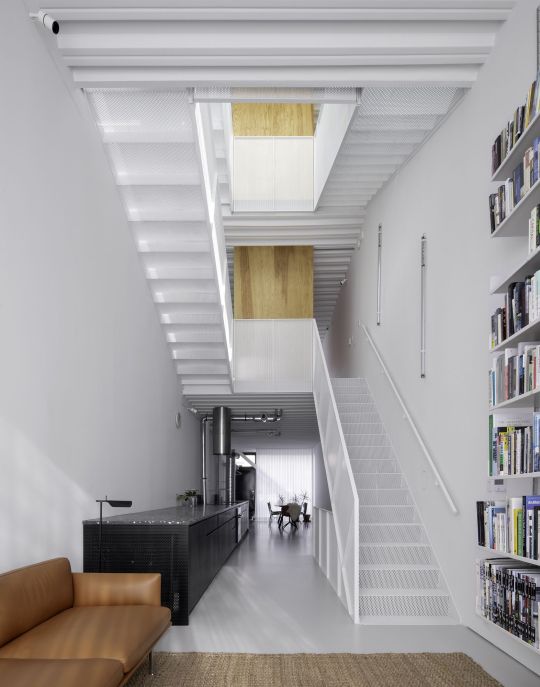


narrow house ~ only if | photos © iwan baan
#architecture#houses#skinny house#stairs#narrow#roof deck#cross bracing#perforated metal#white#urban renewal#shelving#library#open plan#living#kitchens
159 notes
·
View notes
Text
youtube
Replace White Supremacy
#blaxploitation#melanin#black panther party of self defense#afeni shakur#2pac shakur#gentrification#eminent domain#urban renewal#unia#universal negro improvement association#garifuna#caribbean#africa#melanated#latinos#ghetto america#ghetto worldwide#black is beautiful#black family#black man#black woman#black child#black tumblr#Youtube
3 notes
·
View notes
Text

Monticello, Arkansas (2004)
#southern gothic#rural decay#rural gothic#rural america#urban renewal#small town america#fire#abandoned#arkansas#american gothic
1K notes
·
View notes
Text
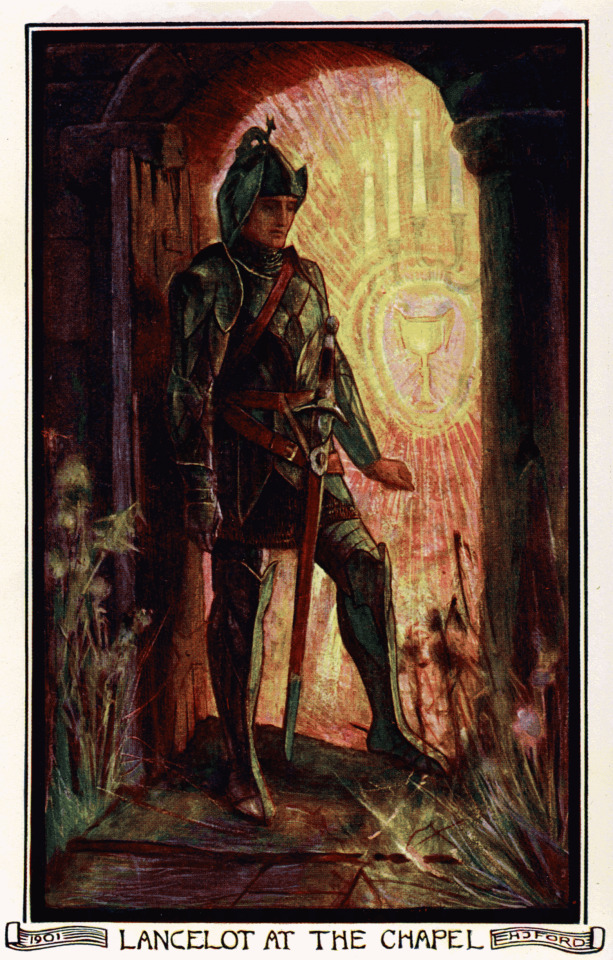
TODAYS CHARACTER WHO HATES HAUSSMANIZATION IS: Lancelot from medieval literature!
18 notes
·
View notes
Text

The National Association of Realtors and organized real estate played an even larger role in intentionally segregating the country than most people knew - those wrongs must be redressed.


A redlining map of St. Louis, prepared by the federal government’s Home Owners' Loan Corporation, used data from local real estate professionals to “grade” neighborhoods, based largely on their racial makeup. Credit: National Archives/Mapping Inequality
In March, a court in the Northern District of Illinois allowed a class-action lawsuit to move forward against the National Association of Realtors, the trade organization that is single largest federal lobbying spender in the US.
The organization, along with seven major real estate companies that serve as its co-defendants in Moehrl et al., could be hit with $13 billion to $40 billion in damages. (The lawsuit is the larger of two separate class-action cases moving through the courts.) The case revolves around how the NAR leverages its local member boards’ control of 97% of multiple listing systems to keep in place rules regarding set commissions — as the lawsuit notes, US homebuyers and sellers pay commission rates roughly double those of peer countries.
(continue reading)
#politics#redlining#housing#racism#fair housing#national association of realtors#racial discrimination#anti blackness#urban renewal#realtors#organized real estate#real estate
23 notes
·
View notes
Text
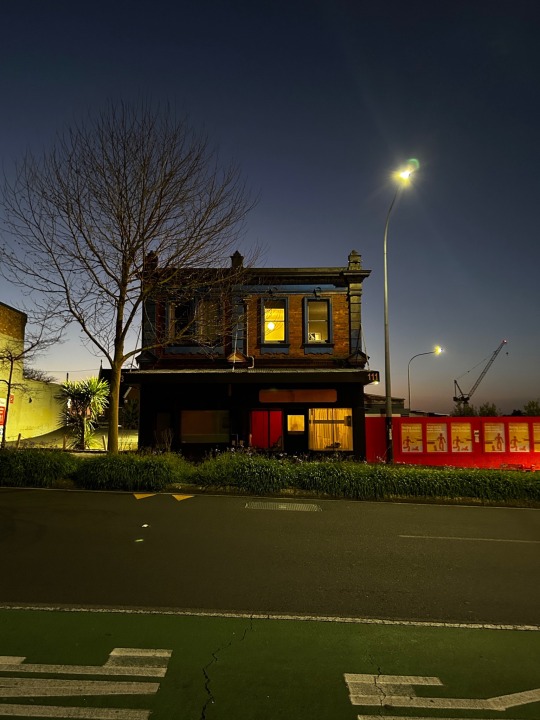
Symonds St, Spring evening
Back when I used to walk down this stretch of Symonds St to university, there used to be a solid row of Edwardian shops. Now they look like a row of gappy teeth, and many of the remaining shops have closed. Both of these are long gone, but people still live there.
62 notes
·
View notes
Text

The saga of San Juan Hill, cont'd (for Part I, see this post)
On September 11, 1957, residents of San Juan Hill, the integrated, predominantly working-class neighborhood on the West Side between 59th and 65th Streets and West End and Amsterdam Avenues, showed up at City Hall. They were protesting the destruction of their homes for the purpose of building an arts complex called Lincoln Center.
The public hearing lasted nearly 11 hours, with 24 speakers supporting the project and 36 opposed. The issue was framed as housing vs. culture. They also pointed out that the housing units that Robert Moses had reluctantly agreed to build as part of the redevelopment would be out of the price range of current residents.
Two weeks later, West Side Story opened on Broadway. It took place entirely in San Juan Hill, although the community was never referred to by name. Although it's hard to believe now, the show received generally cool reviews; critics were taken aback by its grim realism and aggressive, jazzy score (by Leonard Bernstein).
Many neighborhood residents were offended by the portrayal of their home. Puerto Ricans, who made up 24% of the population who lived there, objected particularly to the line in the show-stopping number "America" that called Puerto Rico an "island of tropical diseases." (They ignored the context, which is a back-and-forth between a Puerto Rican girl who romanticizes the island and another who mocks her dreamy outlook.)
On October 25, the Board of Estimate, which was then the city's main decision-making body, held another hearing on the redevelopment project. This one lasted 18 hours, but it seemed that the Board's minds were made up. In late November, they voted unanimously to go ahead with Lincoln Center. Next June, the first residents of San Juan Hill were relocated.
In 1960, as the last of the brownstones were being demolished, a film crew moved in. It was the (first) screen version of West Side Story.
youtube
Photo: Gothamist
#vintage New York#1950s#San Juan Hill#Lincoln Center#gentrification#urban renewal#West Side Story#redevelopment#communities#slum clearance#neighborhood destruction#public hearing#Upper West Side#Youtube#September 11#Sept. 11#11 Sept.
50 notes
·
View notes
Photo

Recycled Cropped Frayed Denim Jacket
#Frayed Denim#denim on denim#Urban Renewal#urban outfitters#jeans#Denim Jacket#Sneakers#outfit#fashion#ootd#style#wardrobe#casual look#minimalist fashion#Streetwear#street fashion#street style#girl
22 notes
·
View notes
